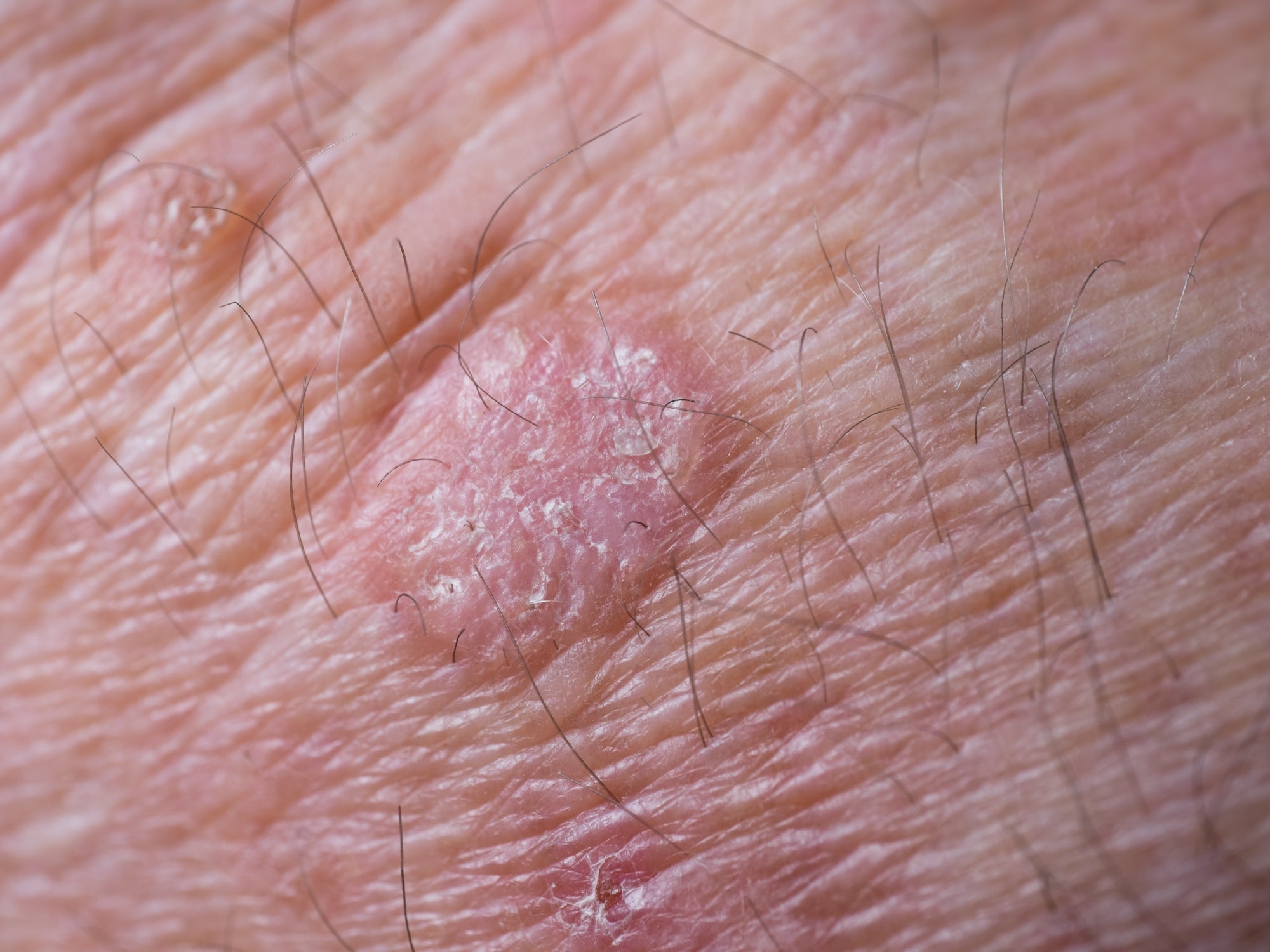What is actinic keratosis?
An actinic keratosis (aka AK) is a type of precancerous skin lesion that is relatively common in older people, especially those with pale skin who live in sunny countries or have worked outside for many years. That’s because actinic keratosis is caused by UV damage to the skin, which develops over a long time. Actinic keratoses appear on skin that has been exposed to sunlight: the top of the scalp, the forehead, the upper chest, back of hands, lips, ears and lower arms are all typical sites.
What does actinic keratosis look like?
AK can take many different forms, and look very different on different people, which is one of the reasons it’s important to get checked out by a medical professional. While it isn’t serious in itself, AK does have an occasional tendency to develop into squamous cell carcinoma, which is a kind of skin cancer and which can look very similar to AK.
Generally though, actinic keratosis is characterised by little bumpy, rough, scaly or gritty-feeling patches of skin, that look differently coloured or textured than the surrounding area. They can be wart-like in appearance, raised or flat, and can crust over, weep, bleed, itch or sting.
Should they be removed?
Whether or not you get your actinic keratosis removed depends on a few different things:
- Whether it affects your self-confidence
- Whether it is uncomfortable
- Whether your doctor is concerned about it becoming cancerous
- How big it is
- Where it is on your body
Many AK fade away in time on their own, but because it’s not easy to tell whether or not any one actinic keratosis lesion will become cancerous, many doctors will remove them to be safe. And once you’ve had one AK, you are likely to get more, because the UV damage that caused them has happened already. Some might reappear in exactly the same spot; others might appear in different areas of the body that have been exposed to sunlight.
How they’re removed will depend on how many they are, where they are, and how severe they are, but options range from topical treatments, to cryotherapy, photodynamic therapy or surgical excision.
See our article What Is The Best Treatment For Actinic Keratosis? for more details about preventing and treating actinic keratosis.
Because of its association with skin cancer, AK is definitely something you should get a doctor to look at, rather than treat at home. Moisturising your skin with intensive, non-irritant creams or salves can help keep your skin in good, healthy condition, even if you need medical treatment as well. Natural emollients can help soften and smooth itchy, rough patches, nourish depleted or damaged skin, and can also support healing from any procedure to remove AK.
We advise customers not to apply oil-based balms like Skin Salvation to skin exposed to direct sunlight, as the high oil content can cause burning and we don’t add sunscreens to our products. Apply last thing at night instead!
Recommended products:
Balmonds Skin Salvation
with hemp and beeswax
Balmonds Cooling Cream
with shea, menthol, aloe vera & lavender
Balmonds Daily Moisturising Cream
with shea butter and calendula
